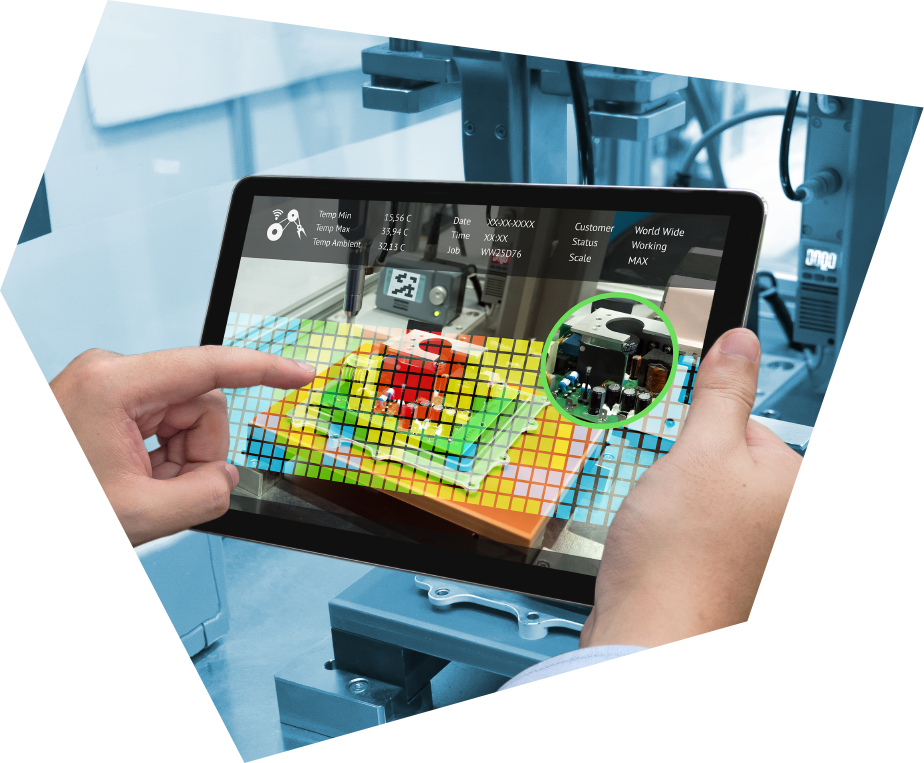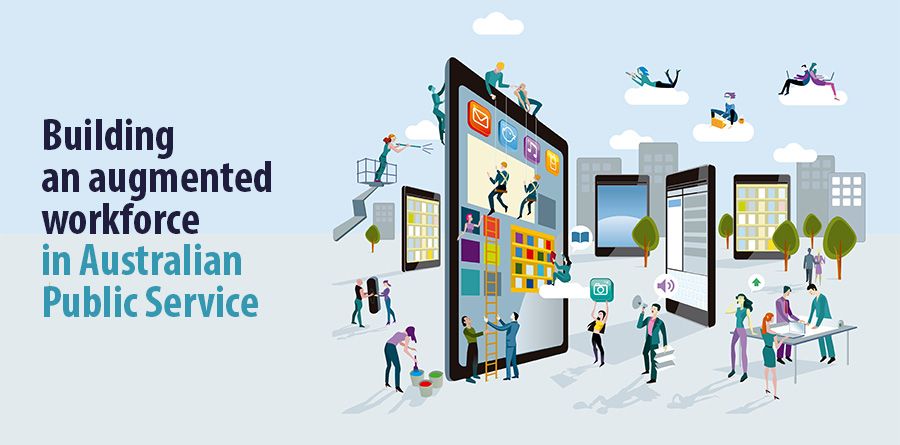
Building an augmented workforce in Australian Public Service

Matthew Watkins, Partner for Digital and Technology at Synergy Group, talks through a phased approach that allows a workforce to adapt and improve their digital maturity in a deliberate way – always working with the strategic, future state in mind.
What is an augmented workforce?
No longer can a digital mindset and technical literacy be an add-on. It needs to be an embedded part of our everyday work. The team need to be comfortable working within a digitally-enhanced organisational culture.
“An augmented workforce is skilled to work in an agile way – there’s a smooth interchange of activity between human workers, digital workers and cognitive assistants,” says Matthew.

“Data and evidence drive policy, processes and decisions and people have a high level of trust in digital capabilities. There is also a high degree of technical literacy that has been applied to guide the digital and cognitive assistants.” This means automated work and artificial intelligence (AI) is embraced, where relevant, as a primary contributor to the workforce.
How do we create one?
To move an organisation towards an augmented workforce, most APS workplaces have to undertake both a workforce transformation and a business process transformation. “It can take some time to improve digital maturity,” says Matthew. “Plus, technology is continuously changing, so there has to be a continuous investment in the digital strategy.”
First, portions of the APS workforce must be upskilled in modern digital capabilities and technical literacy – and this isn’t just for the ICT people. “There needs to be a broad level of education that raises awareness of the digital intent, and then raises skill and trust in that intent,” says Matthew.
“Some people could be doing higher value work, while lower value work is in-sourced to digital workers or automated. Aligned with this, there needs to be work done on the ethics of automating some job roles or functions and policies dealing with the move to an augmented workforce.”
There may be also be some constraints embedded in an organisation’s ICT governance and operations that needs to be overcome. ICT policies and processes are likely to have been designed around a static application-based ICT operating model, as opposed to a dynamic multi-speed ICT operating model based on business-configurable scalable ICT platforms. It implies a different way of running ICT services, underpinned by different funding models to today.
Before any of this happens, there needs to be an investment in knowing one’s business, improving business processes, understanding the data that underpins those processes, and committing in a strategic way to what can be automated or where to apply AI capabilities.
Where are we heading?
Piloting is a useful starting point for automation and cognitive technologies. “Initially a focus on transactional task-based automation or augmentation is a way to help an organisation see how they can benefit from new technologies,” explains Matthew.
“Initially a focus on transactional task-based automation or augmentation is a way to help an organisation see how they can benefit from new technologies.”
– Matthew Watkins, Synergy Group
Importantly though, in parallel to any pilot programs, the business needs to take a strategic approach to understanding their business context and outcomes, and what their future state looks like underpinned by an augmented workforce, as well as identifying key use cases for automation and technology platform requirements aligned to supporting their future needs.
“A good strategy would include a close look at how industry has changed and adapted to an augmented workforce as they are several years ahead of the Australian Public Service,” says Matthew. “This sets the goals for the move to an augmented workforce, and lessons that should be heeded in the design phase.”
“And while some early automation is tactical and compensates for gaps in legacy ICT capabilities, an augmented workforce involves designing a future state with the new automation and AI in mind, which means it is a permanent construct.”
Identify the areas of the business that need to be closely reviewed for augmentation or automation suitability, whether it is to improve service delivery, efficiencies, effectiveness, or other factors such as quality, compliance or speed.
Step by step
With a clear strategic understanding of the automation needs of the business, Matthew suggests teams then analyse the impact on:
- their current workforce, and what capability gaps might exist
- ethics, governance and policies – including people-related policies and also ICT governance and security
- the current operating model and ways of working
- the current ICT architecture, strategy and technology roadmap.
To design a target-state operating model for an organisation with an augmented workforce, it needs to bring together the business outcomes and the workforce elements, maturity dimensions and design principles to guide staged investment. This includes how the digital workforce will be managed (whether it be centralised, de-centralised, federated, and so on) as well as both the human and the technology elements of the change program.
“From here, you define measures of success so the organisation knows they are making progress in the right way,” says Matthew. “Given all this analysis, you want to know what a transformation would look like and design the change program of work from there – including how funding will be obtained.”
Back to the beginning
While this strategic change program is the guiding framework, Matthew says that it all starts with educating the workforce, by building digital awareness and showing them the art of the possible, how automating business-friendly digital capabilities can benefit everyone.
